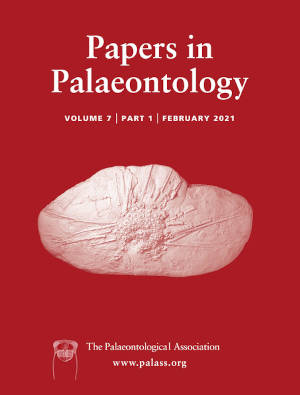Reg. Charity No. 1168330

The Sirius Passet Lagerstätte of North Greenland is one of the oldest records of soft-bodied metazoan-dominated ecosystems from the early Cambrian. The Lagerstätte site itself is restricted to just a single c. 1-km-long outcrop located offshore from the shelf margin, in an area affected by metamorphic alteration during the Ellesmerian Orogeny (Devonian – Early Carboniferous). The recent recovery of small carbonaceous fossils (SCFs) to the south, in areas that escaped the effects of this deformation, has substantially expanded the known coverage of organic preservation into shallower water depositional settings in this region. Here, we describe additional SCF assemblages from the siliciclastic shelf succession of the Buen Formation (Cambrian Series 2, stages 3–4; c. 515 Ma), expanding the previously documented SCF biota. Newly recovered material indicates a rich diversity of non-mineralizing metazoans, chiefly represented by arthropod remains. These include the filtering and grinding elements of a sophisticated crustacean feeding apparatus (the oldest crustacean remains reported to date), alongside an assortment of bradoriid sclerites, including almost complete, 3D valves, which tie together a number of SCFs previously found in isolation. Other metazoan remains include various trilobite cuticles, diverse scalidophoran sclerites, and a range of metazoan fragments of uncertain affinity. This shallower water assemblage differs substantially from the Sirius Passet biota, which is dominated by problematic euarthropod stem-group members and sponges. Although some of these discrepancies are attributable to taphonomic or temporal factors, these lateral variations in taxonomic composition also point to significant palaeoenvironmental and/or palaeoecological controls on early Cambrian metazoan communities.
AcknowledgementsWe thank Thomas H. P. Harvey, Sally Thomas and an anonymous reviewer for their constructive comments and detailed feedback on the manuscript. Samples from the Buen Formation were collected during field work supported by the Geological Survey of Greenland.